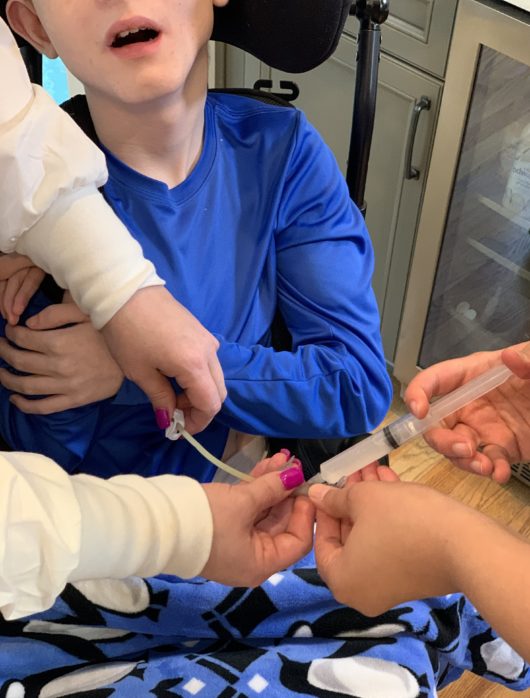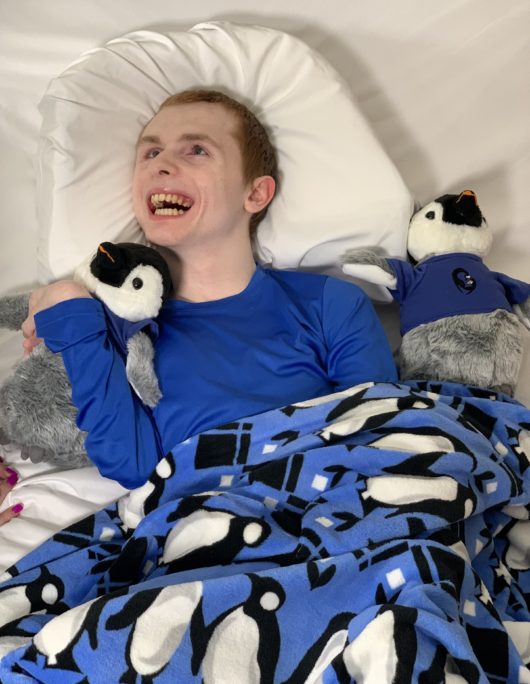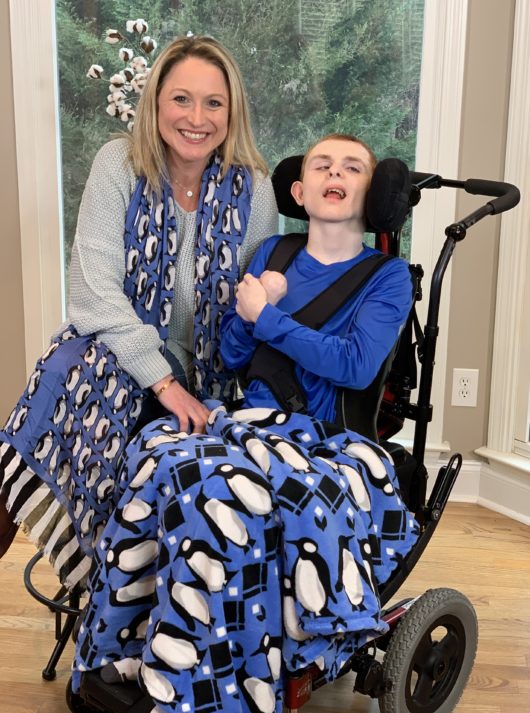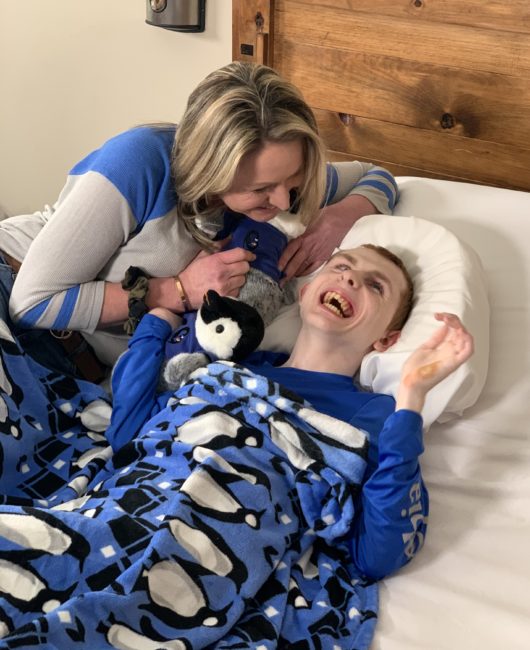“What I learned from having the G-tube procedure was difficult, but all is well now!”
Meet Heather, one of our wonderful ACP Moms!
In this article, she tells us more about her intense experiences with several surgeries,
G-tube placement, and regular challenges of raising a healthy teenager.
Enjoy the reading!

Our story is going to sound a little scary but as a parent who has not had to contend with the aspects of a feeding tube until the teenage years, please learn from my mistakes and know that it has improved our stress and quality of life in a positive way!
With fast-growing bones and muscles, we ended up having major hip surgery in 2016. Which led us down a new sequence of events and education. Due to my son being so healthy, the only major surgery he had was the left Hemispherectomy. I talked to the orthopedic surgeon a thousand times and I am positive I annoyed him immensely with all my emails prior to the surgery!
After the surgery (that was successful), we were not prepared for the pain aspect. It completely abandoned my mind on how he was going to chew and swallow being on such heavy pain medications. His pain management became unmanageable! He lost 10% of his body fat 3 weeks after surgery. So, in order to maintain his dietary needs and pain management, we spent months in the hospital. Soon, medications started piling on which led to some aspiration with the liquid meds by mouth.
My son was diagnosed with a rare disorder at birth, which led us down the path of having to remove a left part of his brain to stop his seizures. He thrived after the surgeries and all his seizures stopped.
He had a G-Tube for feedings as a preemie and during the healing between the 4-part surgery because he could not stop having seizures enough to learn to eat and feed. We were very lucky and after a full left Hemispherectomy, he no longer needed the G-Tube for feedings.
Since about 9 months old he began to eat by mouth and started drinking from a bottle and now a sippy cup. He was eating everything, from peanut butter and jelly sandwich to pizza! As my son got older, he was extremely healthy until puberty around 13 years old. We were starting a new chapter of uncharted territory and unfortunately unprepared for the quick changes in his health. But as a parent of a special needs child, we must always be adaptable, aware, and educated.

He went from 1 to 15 medications per day! After he healed from the hip procedure we were headed for another surgery. Taking my knowledge from the previous surgery, we met with his GI doctor and decided to put in a G-tube so that we could meet his nutritional and pain management needs at home.
It was a very hard decision because it felt like we were regressing. But controlling aspirations, pain management, and nutrition at home were in his best interest. What I learned from having the G-tube procedure was difficult, but all is well now!
These are the things that I learned:
1. Complications following PEG placement in patients with VP shunts are infrequent, but it happens!
He had his original VP shunt of 15 years, and 2 months after placement and multiple trauma ER visits we realized his shunt was infected! So, 4 emergency open brain surgeries in 15 days was rough. Anytime you have a GI procedure there is a major risk of infection of the shunt. If your child has one, make sure to have them tap the shunt and get a culture with and complication’s after placement.
2. My son had a hard time tolerating feeds.
That’s when we decided to put in a GJ which luckily for us the procedure is not invasive if a G-tube already exists. The wonderful thing about it is that it bypasses the belly and goes into the small intestines preventing aspirations, vomiting, and maintains nutrition!
3. Life-Changing
Now that the GJ dash tube is in place it has helped our lives immensely! Now if he gets sick or has a day surgery, I’m able to give him feeds for nutrition also hydrate him before the procedure without stressing out if he’s getting enough before he goes under anesthesia.
4. Hospital-Free!
With the changes in his health, I have been able to keep him out of the hospital on multiple occasions. In January and this past weekend in February 2020, I was able to provide hospital-level care at home for him myself and prevent him from being exposed to much greater infections.
5. G-tube to GJ Tube
Switching from a G-tube to a GJ tube is a relatively simple procedure. If there is already a G-tube in place, the GJ tube can be placed into the same stoma, so no additional surgery is required. The switch is done in the Interventional Radiology department. A special kind of continuous x-ray called fluoroscopy is used to correctly place the GJ. Some hospitals allow parents to be in the room and others do not. But, be proactive and set up a scheduled replacement with your GI doctor with day procedures about every four months to prevent it from leaking or getting clogged. Keep it clean and flush after every feed, especially if your child is on supplemental feeds. Always make sure that it is working! You don’t want to find out that it’s clogged when you need it! Because it does require a trip to the hospital.
I hope this was able to help parents out there getting a G-tube later life! We are so happy to have it now! It has really changed treating and preventing. It gave us the power to take care of him at home and relieve the stress of trying to force medications and nutrition in a traumatic brain injury teen with an attitude!






